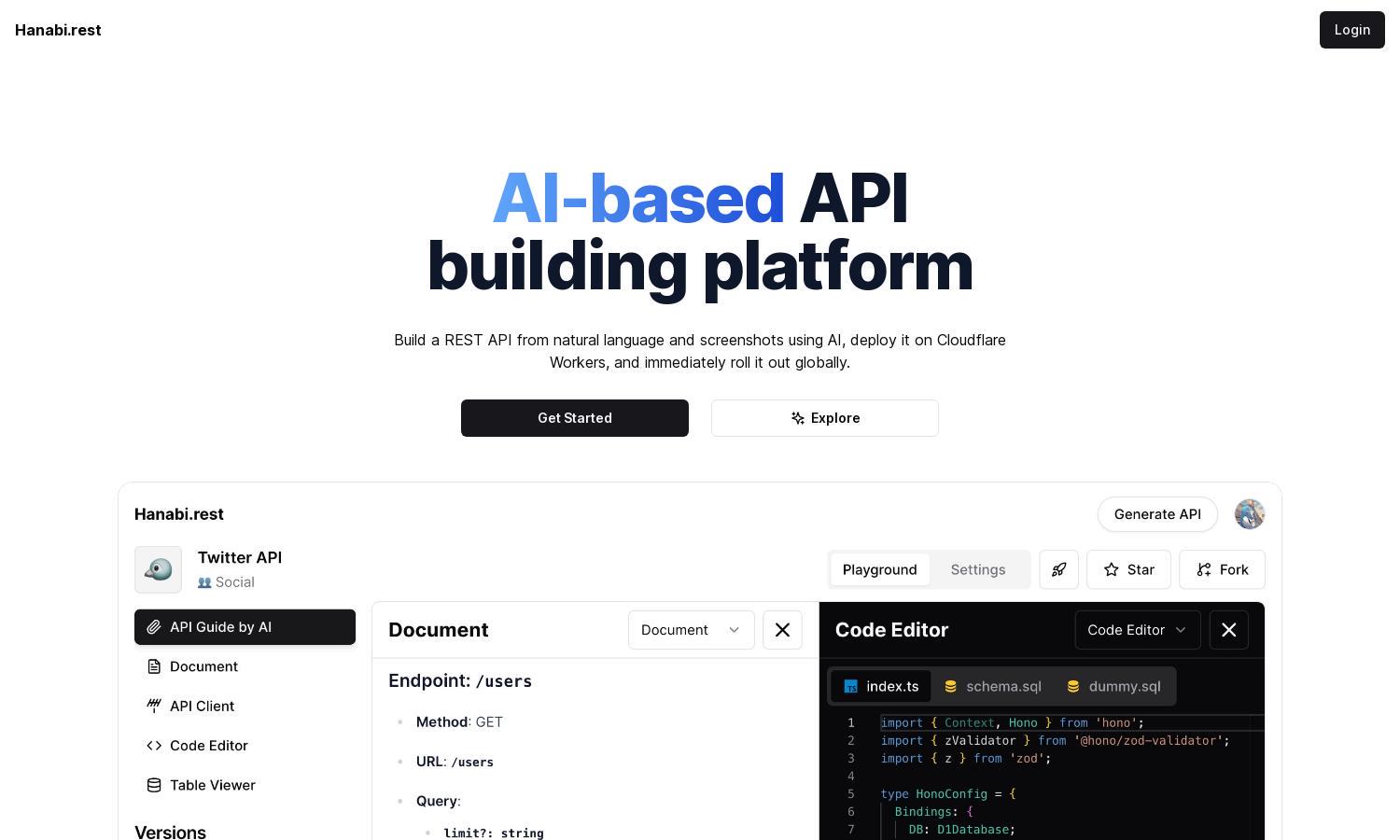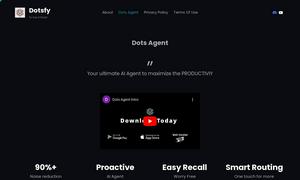Hanabi.rest

About Hanabi.rest
Hanabi.rest empowers developers to create REST APIs using AI by transforming natural language and images into functional APIs. Its live editor and sandbox testing enhance user experience, allowing for quick deployment on platforms like Cloudflare. This innovative approach solves the tedious process of API development.
Hanabi.rest offers several pricing plans designed to cater to different user needs. Each tier provides access to exclusive features, ensuring value at any level. Users can upgrade for added benefits and special discounts to enhance their API building capabilities with this innovative platform.
Hanabi.rest features an intuitive user interface designed for seamless interaction. The layout simplifies browsing with clear access to its powerful functionalities, making API creation quick and easy for users at all experience levels. Enhanced options ensure that developers find the tools they need effortlessly.
How Hanabi.rest works
Users begin by signing up on Hanabi.rest and gain access to the AI-powered API editor. They can input natural language commands or images to generate APIs. The platform provides real-time testing in a live sandbox, allowing for immediate feedback. Users can easily deploy their APIs to Cloudflare Workers and manage their projects via a simple interface.
Key Features for Hanabi.rest
AI-Powered API Generation
Hanabi.rest stands out with its AI-powered API generation that converts natural language and screenshots into functional REST APIs. This key feature removes traditional barriers in API development, enabling users to focus more on innovation and less on coding intricacies.
Live API Sandbox
The live API sandbox feature of Hanabi.rest allows users to test their API endpoints securely in real-time. This innovative aspect ensures that developers can verify functionality before deployment, improving reliability and confidence in the APIs they create.
Multi-runtime Deployment
Hanabi.rest offers multi-runtime deployment, enabling seamless integration across popular platforms like Cloudflare, AWS, and more. This feature provides flexibility and ensures that developers can adapt their APIs to various environments without additional complexities.
You may also like:








